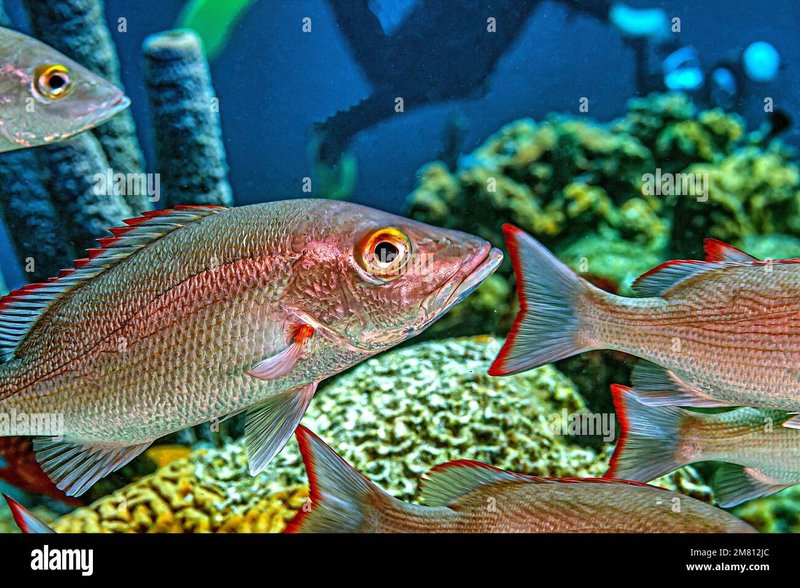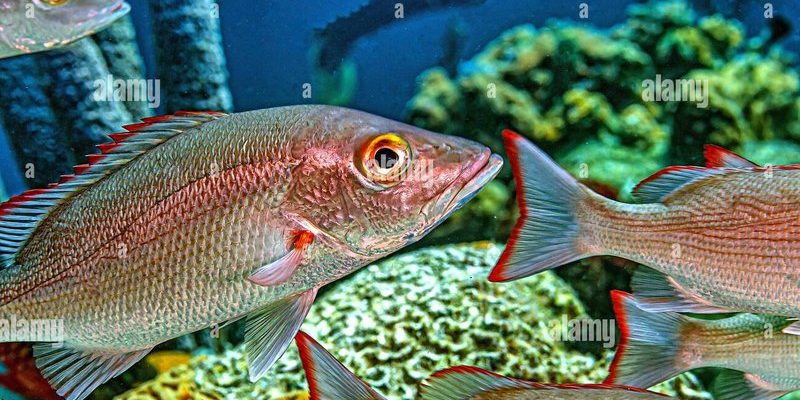
Snapper are known for their vivid colors and excellent taste, making them a favorite among anglers and seafood lovers alike. But beyond their culinary appeal, snapper hold a vital position in marine habitats. They act as predators and prey, influencing everything from the populations of smaller fish to the health of coral reefs. So, what exactly is the snapper’s role in marine ecosystems? Let’s dive deeper into this fascinating topic!
Understanding Snapper Species
There are various species of snapper, but the most recognized ones include the red snapper and the cubera snapper. Each species has its unique characteristics and habitats, making them integral to different marine ecosystems.
- Red Snapper: This species is popular in both commercial and recreational fishing. They are often found in deeper waters which provide rich feeding grounds.
- Cubera Snapper: Known for their robust size and powerful jaws, cubera snapper are often found near rocky structures and reefs.
You might be wondering, “Why are there so many types of snapper?” Each species adapts to its environment, finding unique ways to thrive. For example, the red snapper prefers deeper waters, while the cubera snapper loves rocky areas. Their variations in habitat and behavior contribute to the overall health and diversity of marine ecosystems.
The Predator-Prey Dynamics
Snapper are considered apex predators in many marine ecosystems. This means they’re at the top of the food chain, feeding on smaller fish, crustaceans, and even squid. By doing so, they help regulate the populations of these species, preventing overpopulation that could lead to an imbalance.
But here’s the thing: their role doesn’t only limit them to being hunters. Snapper themselves are prey to larger predators like sharks and groupers. This makes them an important link connecting various levels of the food chain. Just like an intricate tapestry, each species weaves its thread into the larger picture of marine life.
To visualize this predator-prey relationship, consider a soccer game. The snapper are the midfielders, crucial in both defending and attacking, ensuring that the game flows smoothly. Without them, the balance of the entire ecosystem could falter.
Impact on Coral Reefs
Coral reefs are often called the rainforests of the ocean because of their vast biodiversity. Snapper play a significant role in maintaining the health and stability of these delicate ecosystems. They help control the population of herbivores, like parrotfish, that graze on algae. Without snapper to keep their numbers in check, herbivores can overconsume coral, leading to coral bleaching and habitat loss.
Imagine a garden where weeds overtake the flowers if not properly managed. Snapper act like a gardener, helping to maintain the balance between different species so that coral reefs can thrive. Healthy coral reefs not only support diverse marine life but also contribute to the economy through fishing and tourism.
Supporting Local Fisheries
Snapper are also economically important to many coastal communities. They sustain local fisheries, providing jobs and food for countless people. A vibrant snapper population ensures that fishing remains a viable source of income for fishermen.
However, overfishing in some areas threatens these valuable fish. When snapper populations decline, it doesn’t just hurt local economies; it disrupts the entire ecosystem. Managing snapper fisheries sustainably is crucial for both the environment and communities that rely on them.
Think of it like a bank account: if you keep taking out money without saving, eventually, you’ll run out. Maintaining snapper populations ensures that future generations can continue to enjoy and benefit from these amazing fish.
Conservation and Challenges
Conservation efforts are essential to protect snapper and their habitats. Overfishing, habitat destruction, and climate change pose significant threats. Many organizations are working to promote sustainable fishing practices and protect marine environments.
For instance, implementing fishing quotas, creating marine protected areas, and raising awareness about responsible fishing can help. These steps are like putting on a seatbelt in a car—simple actions that can have a big impact on safety and longevity.
Conservation isn’t just about saving fish; it’s about ensuring the health of entire ecosystems, benefiting not only marine life but also the human communities that depend on them.
The Cultural Significance of Snapper
In many cultures, snapper holds a special place not only on dinner plates but also in traditions and stories. For example, in some island communities, snapper is associated with good fortune and celebration. Traditional fishing methods and recipes pass down from generation to generation highlight their cultural importance.
This connection to culture emphasizes how deeply intertwined human life is with marine ecosystems. Our relationship with species like snapper can spark conversations about sustainability and respect for nature.
Just like sharing a family recipe, it’s about passing down knowledge and appreciation for the role these fish play in our lives and the ocean.
The snapper’s role in marine ecosystems is multifaceted and vital. From being a key predator to supporting local economies and preserving coral reefs, snapper are far more than just a tasty dish. They weave a complex web of life that connects different species and human communities alike. Understanding and protecting their role ensures that our oceans remain healthy and vibrant.
As we enjoy our next meal featuring snapper, let’s remember their essential contribution to the underwater world. By supporting sustainable practices and conservation efforts, we can help preserve this stunning fish and the intricate ecosystems they inhabit for generations to come.

